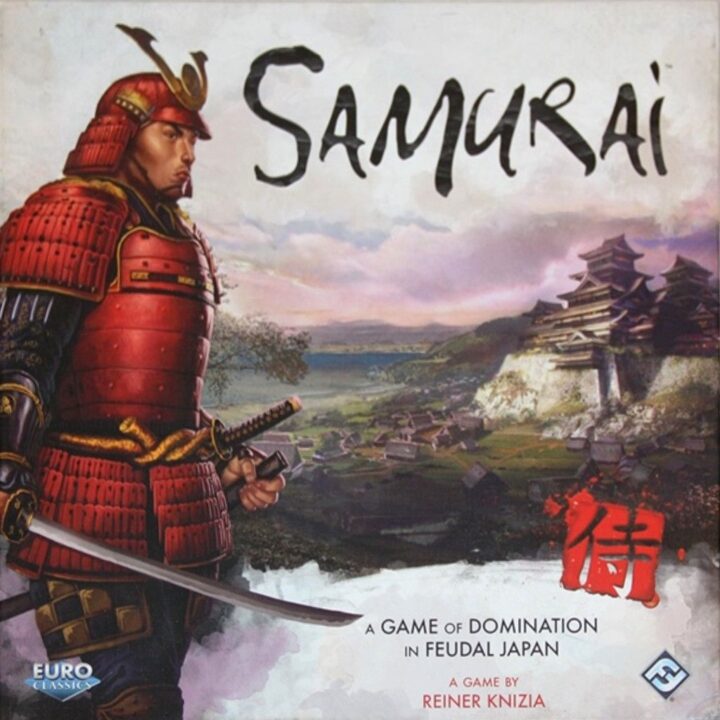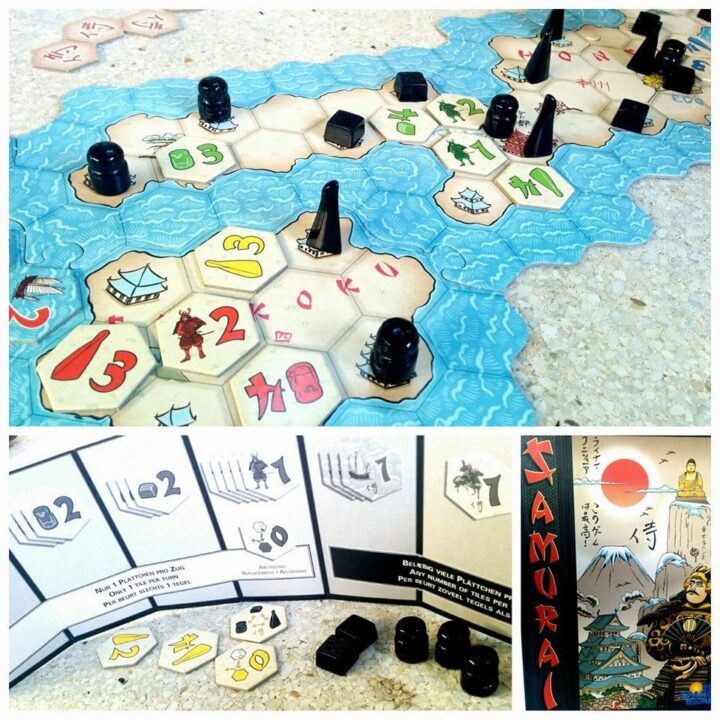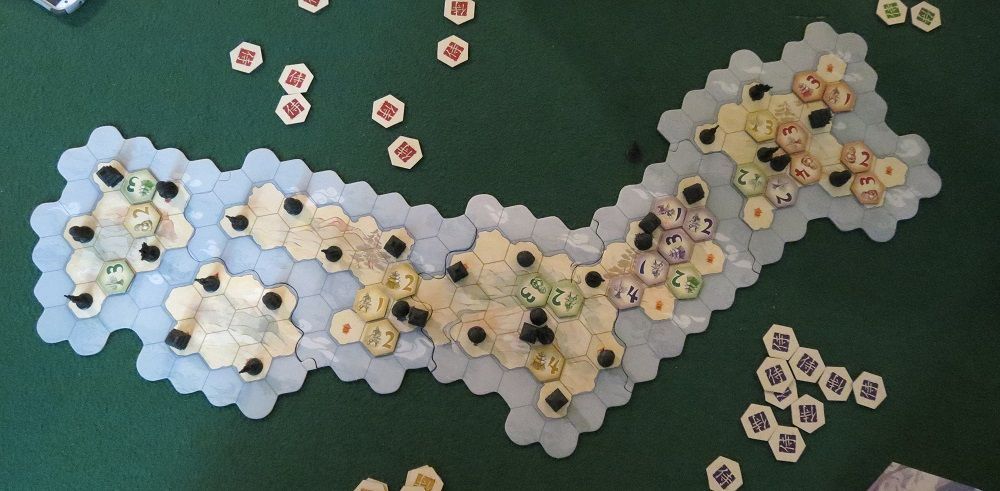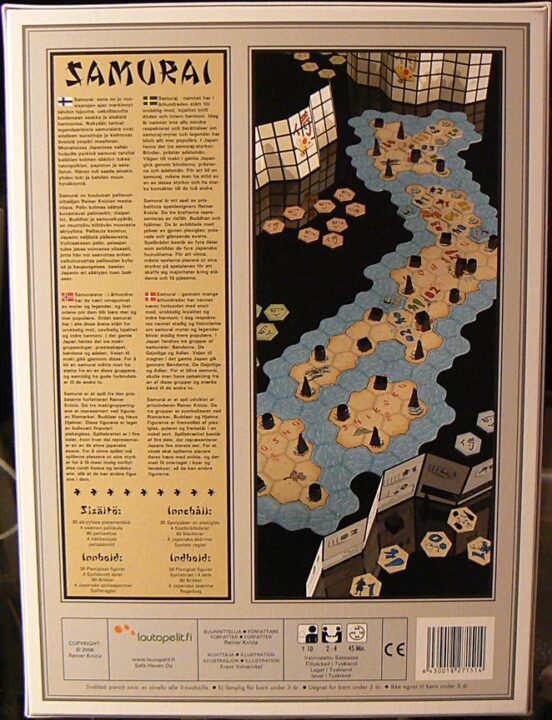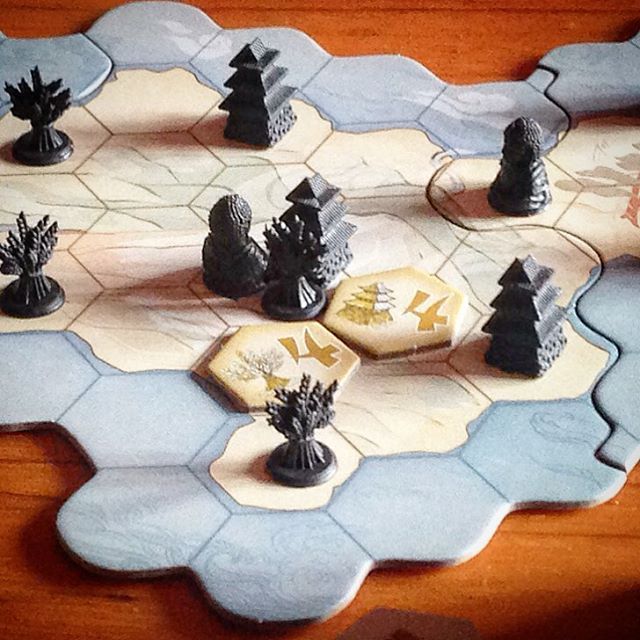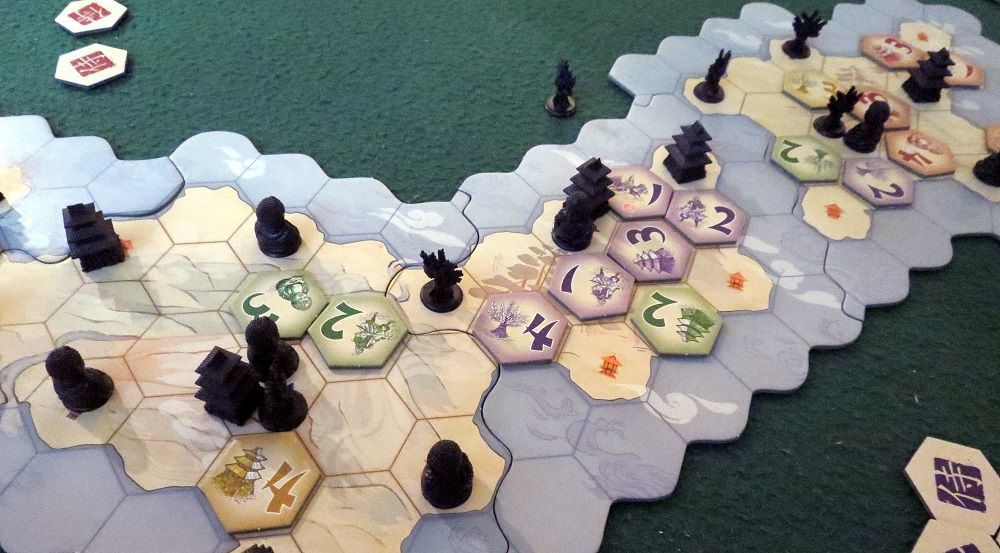Overview
Hey fellow board game enthusiasts! Jamie here, diving into the world of feudal Japan with my latest review on the board game ‘Samurai‘. Prepare for an adventure where strategy and adaptability clash on a beautifully designed board. Let’s see if this game slices its way to the top of your must-play list or if it gets lost in the shuffle of board game history.
How It Plays
Diving into ‘Samurai’, a game of strategy and cunning set in feudal Japan, becomes an adventure. Here’s a straightforward run-down of how the game unfolds, from setting it up to declaring the winner. Grab your friends, because this is a journey you won’t forget anytime soon.
Setting Up
Setting up ‘Samurai’ is like laying the foundation of your own feudal empire. Spread out the board, which represents islands of Japan. Each player picks a color and takes the corresponding tiles that include high-ranking samurai, rice fields, and Buddhas. You’ll place these on specific spots on the board, aiming to gain the influence over major cities and territories. The setup feels like you’re gearing up for an epic showdown, and, in a way, you are.
Gameplay
Once the battlefield is set, the struggle for honor and control begins. Players take turns placing their tiles around the cities, trying to surround them with their influence. But it’s not just about brute force; it’s about smart placements and outmaneuvering your opponents. Sometimes, a well-placed rice field can tip the scales more than a samurai. It’s a dance of wit and strategy, where every move could lead to your rise or your downfall.
Winning the Game
The end game of ‘Samurai’ is as tense as the final moments of a Samurai duel. Once all the cities are surrounded, players reveal their influence in each category. The one who dominates in at least two out of three categories (samurai, rice fields, Buddhas) is declared the shogun – the winner. It’s a moment of triumph that feels earned, as winning ‘Samurai’ is not just about luck; it’s about strategy, foresight, and sometimes, the courage to take bold moves.
Want to know more? Read our extensive strategy guide for Samurai.
Unveiling the Strategic Depths of Samurai
When I first laid eyes on Samurai, I knew I was in for a strategic ride. This game is not just about throwing dice and hoping for the best. No, it’s a battle of wits, a dance around your opponents as you place your tiles with the precision of a chess master. Each tile placement feels like a move in a larger scheme, aiming to control key points on the board and claim those coveted samurai figures.
The depth of strategy in Samurai is profound. You’re constantly torn between bolstering your positions and sabotaging your rivals. The game encourages you to think several moves ahead, adapting your strategy based on the evolving state of the board. It’s this intricate balance of offensive and defensive play that keeps every game fresh and challenging.
The true beauty of Samurai lies in its ability to meld simplicity with deep strategic play. But let’s not forget the tangible aspects that bring the game to life. Up next, we dive into the world of component quality and aesthetics.
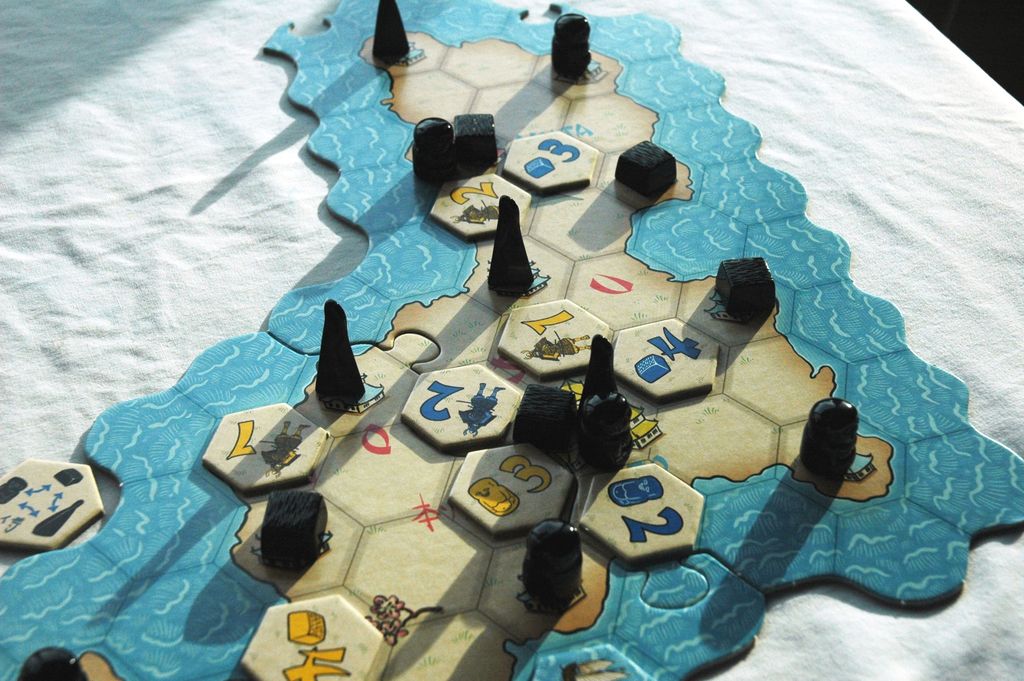
Component Quality and Aesthetics: A Feast for the Eyes
When you open the box of Samurai, you’re not just getting a board game; you’re inviting a piece of art into your home. The game components are a standout feature, with beautifully crafted tiles and figures that bring the feudal Japan theme to life. Each samurai figure is intricately designed, making you feel like a true warlord strategizing over the map of Japan. The tiles are thick and durable, with icons that are both clear and aesthetically pleasing, ensuring that they can withstand countless gameplay sessions without showing signs of wear.
The board itself is a work of art, with a map that’s both functional and visually stunning, drawing players into the historical setting. The attention to detail in the aesthetic design of Samurai elevates the game experience, making it not just a game but a centerpiece of any game night.
Next, we’ll draw our swords and step into the arena of Balance and fairness among players, a crucial duel in any board game.
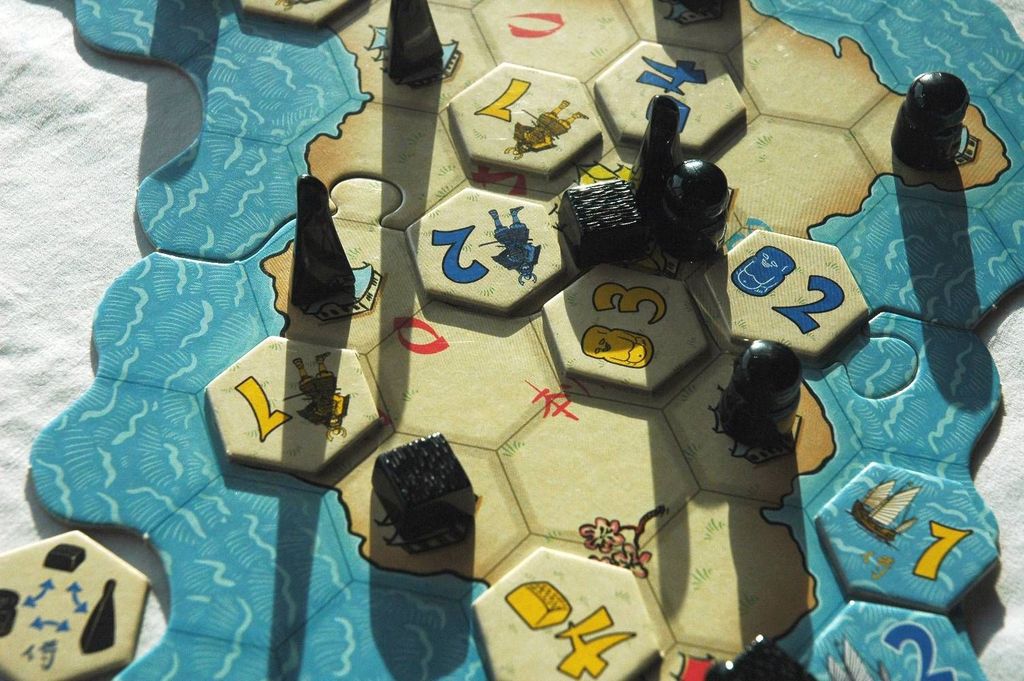
Samurai: Mastering the Art of Balance
Ever played a game where you felt like you had no shot from the get-go? Not with Samurai. This beauty nails the balance on the head. You might think it’s all about snatching up those high-value tiles, but you’ll soon find that strategy and adaptability are your true swords. The game’s design ensures that no player can steamroll over the others without some serious brainpower and a bit of tactical flexibility. It’s like a tug-of-war, but instead of rope, you’re pulling on the strings of ancient Japan’s fate. You start off on equal footing, and every move counts. But here’s the real kicker: it’s not just about being aggressive. You’ve got to defend and plan, making Samurai a masterclass in fairness.
Ready to dive deeper? Let’s sharpen our minds as we explore the learning curve and rule complexity next.
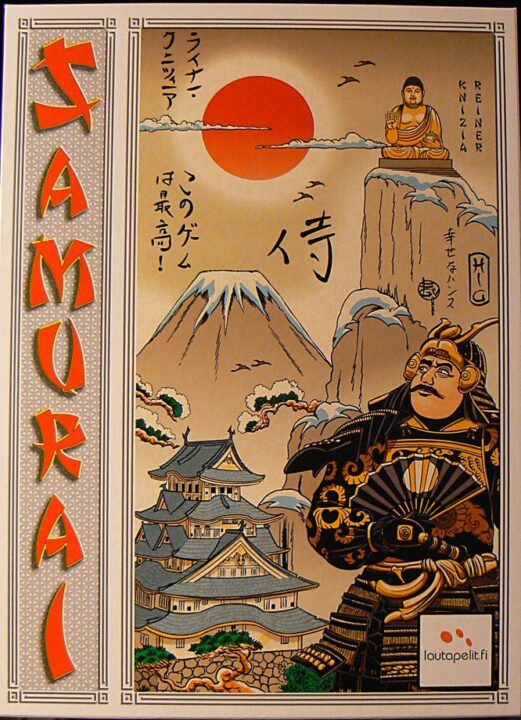
Mastering Samurai: A Journey from Novice to Shogun
Jumping into Samurai may seem daunting at first glance, with its array of pieces and strategic depth, but don’t let that deter you. The genius of this game lies in its deceptively simple rulebook. It’s a breeze to get through, and you’ll find yourself ready to start your conquest in no time. However, don’t be fooled by the initial simplicity; the true mastery of Samurai comes from understanding the subtle intricacies of gameplay and strategy that unfold over multiple playthroughs.
The learning curve is perfectly pitched, ensuring that new players can quickly grasp the basics while offering seasoned players plenty of strategic depth to explore. The game walks a fine line, balancing ease of entry with a complexity that rewards strategic thinking and adaptation. This makes Samurai a game that grows with you, ensuring that each game feels fresh and exciting.
All in all, Samurai manages to be accessible yet challenging, making it a game I wholeheartedly recommend. Dive in, the land of the rising sun awaits your command!
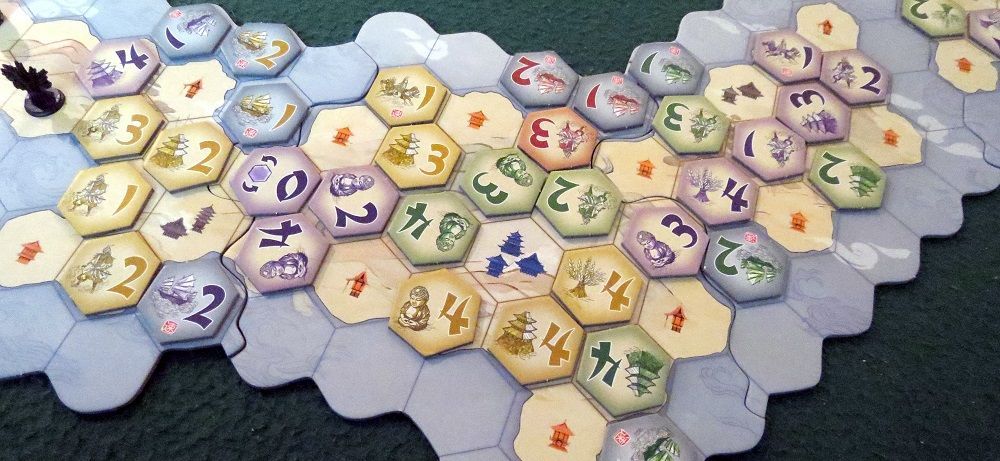
Conclusion
Wrapping up, ‘Samurai’ is a game that strikes an impressive balance between strategic depth and aesthetic appeal. Through its clever gameplay mechanisms, it challenges players to think critically and adapt to changing situations. The components are top-notch, adding to the overall immersive experience. The game is well-balanced, ensuring that no player ever feels at a disadvantage purely due to luck. Moreover, its learning curve is just right, making it accessible to newcomers while still being engaging for seasoned players. In a nutshell, ‘Samurai’ is a board game that deserves a spot on your shelf, offering hours of strategic fun without overstaying its welcome. It walks that fine line between complexity and accessibility, making it a hit in my book and likely yours too.

